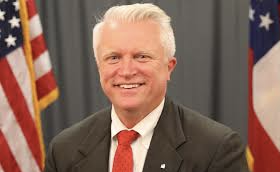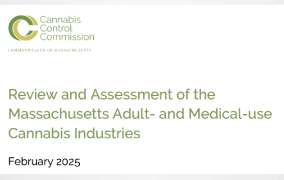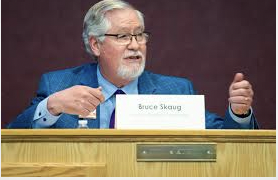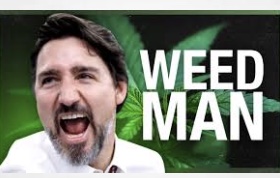By on
We write blog posts about cannabis, but most of the time the posts are about things that are happening in the cannabis world. This post is about whether something should happen in the cannabis world. Specifically, should American courts recognize the access to marijuana as a fundamental right for all Americans? This is not intended to be a partisan piece; rather, one that examines marijuana in the context of existing Constitutional jurisprudence as recognized by United States Supreme Court precedent.
Let’s be very clear: You can read the Constitution from start to finish, and you will not find any provision that expressly enumerates the right to access marijuana. So, if the right is to exist, it must be one of a limited number of unenumerated fundamental rights that have been recognized by courts.
What Is a Fundamental Right?
Unenumerated fundamental rights are, essentially, a creation of the courts arising from the due process clause of the 14th Amendment to the Constitution, which reads in relevant part: “No State shall…deprive any person of life, liberty, or property, without due process of law.”
The Supreme Court has defined a fundamental right as a right that is “deeply rooted in this Nation’s history and tradition and implicit in the concept of ordered liberty.”
Examples of fundamental rights recognized by the Supreme Court include:
- The right to marriage;
- The right to public education;
- The right to interstate and intrastate travel; and
- The right to privacy.
Does Marijuana Meet the Definition of a Fundamental Right?
Let’s get this out of the way: Adult-use marijuana is almost certainly not soon – if ever – to be recognized as an unenumerated fundamental right. While it is conceivable that a Constitutional amendment would provide that right, the right is not one that lends itself neatly to being recognized as fundamental by the judiciary.
But when it comes to marijuana used for medicinal purposes, the analysis – even if not the result – should be different. After all, the right to access medicine, and use that medicine to treat diseases, is inherently different from the right to experience a certain type of feeling simply for recreational purposes.
Framing the Issue
The difference between the medicinal and recreational uses of marijuana perhaps brings us to one of the first critical questions in determining whether the right to use marijuana for medical purposes is protected by the Constitution: How do you phrase the question presented to a court about the scope of the right?
Oftentimes in fundamental rights cases, the answer to whether a right is fundamental is determined by how the right is phrased. The Supreme Court has said as much: “[W]e have a tradition of carefully formulating the interest at stake in substantive due process cases.”
By way of example, the Supreme Court has recognized a fundamental right to refuse life-saving medical treatment recommended by a physician (i.e., “the liberty of competent, terminally ill adults to make end of life decisions free of undue government interference”), but in the same opinion, declined to recognize a right for that same physician to assist in ending the patient’s life. While these are tough questions, reasonable people can disagree as to whether this is a distinction without a difference.
As another example, in 1967 the U.S. Supreme Court was tasked with reviewing the constitutionality of Virginia’s Racial Integrity Act in Loving v. Virginia, which made interracial marriage a felony. The Court struck down the law, reasoning that “[m]arriage is one of the basic civil rights of man. Fundamental to our very existence and survival.” Surely there is little doubt that, right or wrong, had the question been presented to the Supreme Court in 1967 whether there was a right to same-sex marriage (and not marriage generally), the Court would have reached a different conclusion. After all, it was a different time with different popular beliefs. We can’t overlook the fact that it took the Court another 48 years to extend Loving’s marriage protections to same-sex relationships. In 2015, the Court did finally recognize that right in its Obergefell v. Hodges decision.
As a final example, the Court’s decision in Roe vs. Wade recognizing the fundamental right to an abortion under certain circumstances (which, of course, was overturned in 2022 by Dobbs v. Jackson Women’s Health Organization) was the result of a series of cases where the Court had recognized a right to privacy. Just as in the case of interracial marriages, I suspect the Court that originally recognized a general right to privacy may not have been willing at that time to extend that right to the right to an abortion under certain circumstances.
Viewed under the lens of these examples, it seems important to present to the Court a purported fundamental right that the Court is prepared to recognize. Said another way: Phrasing is everything.
Supreme Court Cases Examining Marijuana
The issue of access to medical marijuana has come before the Court on at least two occasions, one directly and one indirectly.
First, in the 2001 case U.S. v. Oakland Cannabis Buyers’ Cooperative, the Court addressed whether there was a medical necessity exception to the Controlled Substances Act’s prohibitions on manufacturing and distributing marijuana. While the Court did not address the fundamental rights issue directly, it suggested that it would be futile to press a claim of constitutional right to access marijuana as a form of medical treatment. In so doing, the Court assumed a highly deferential stance toward congressional fact finding:
Only [then-]Justice Stevens, who concurred in the judgment, obliquely noted that the question whether the medical necessity defense “might be available to a seriously ill patient for whom there is no alternative means of avoiding starvation or extraordinary suffering”—that is, whether the defense might be recognized if a patient rather than a distributor had raised it—“is a difficult issue that is not presented here.”
Then in the 2005 case Gonzalez v. Raich, which is widely known as a case examining the extent of Congress’s Commerce Clause powers, the Court held that Congress’s power to regulate interstate commerce authorized it “to prohibit the local cultivation and use of marijuana.”
The Court rationalized that Congress had “enacted comprehensive legislation to regulate the interstate market in a fungible commodity” and that “exemption[s]” for local use could undermine this “comprehensive” regime. The Court stressed that Congress had decided “to prohibit entirely the possession or use of [marijuana]” and had “designate[d] marijuana as contraband for any purpose.” Prohibiting any intrastate use was thus, according to the Court, “‘necessary and proper’” to avoid a “gaping hole” in Congress’s “closed regulatory system.”
At the time Raich was decided, maybe that was true, maybe not. But no reasonable person can dispute that federal marijuana policy has changed since 2005.
A Pathway to Recognition of a Fundamental Right
This is a point we’ve made before in a different context:
Ironically the Ninth Circuit’s 2007 opinion on remand after the Raich decision – even though it ultimately concluded that there was no fundamental right to the use of marijuana for medical purposes – provides a straightforward and remarkably prescient roadmap for the current liberal Justices to conclude that such a right does now exist.
On the question of whether marijuana is “deeply rooted in this Nation’s history,” the Ninth Circuit noted that:
It is beyond dispute that marijuana has a long history of use — medically and otherwise — in this country. Marijuana was not regulated under federal law until Congress passed the Marihuana Tax Act of 1937, and marijuana was not prohibited under federal law until Congress passed the Controlled Substances Act in 1970. There is considerable evidence that efforts to regulate marijuana use in the early-twentieth century targeted recreational use but permitted medical use. By 1965, although possession of marijuana was a crime in all fifty states, almost all states had created exceptions for persons for whom the drug had been prescribed or to whom it had been given by an authorized medical person.
On the question of whether a right that may not have been recognized as fundamental in the past may nonetheless be recognized as a fundamental right, the Court used Lawrence v. Texas as an example:
The Lawrence Court noted that, when the Court had decided Bowers v. Hardwick, twenty-four States and the District of Columbia had sodomy laws. By the time a similar challenge to sodomy laws arose in Lawrence in 2004, only thirteen states had maintained their sodomy laws, and there was a noted “pattern of nonenforcement.” The Court observed that “times can blind us to certain truths and later generations can see that laws once thought necessary and proper in fact serve only to oppress.”
On the other hand, the Ninth Circuit was troubled by the fact that medical marijuana had not yet been adopted by a sufficient number of states:
Though the Lawrence framework might certainly apply to the instant case, the use of medical marijuana has not obtained the degree of recognition today that private sexual conduct had obtained by 2004 in Lawrence. Since 1996, ten states other than California have passed laws decriminalizing in varying degrees the use, possession, manufacture, and distribution of marijuana for the seriously ill.
But the court noted that it may have reached a different conclusion if medical marijuana had been permitted in more states and more popularly accepted:
We agree with Raich that medical and conventional wisdom that recognizes the use of marijuana for medical purposes is gaining traction in the law as well. But that legal recognition has not yet reached the point where a conclusion can be drawn that the right to use medical marijuana is “fundamental” and “implicit in the concept of ordered liberty.” For the time being, this issue remains in “the arena of public debate and legislative action.”
For now, federal law is blind to the wisdom of a future day when the right to use medical marijuana to alleviate excruciating pain may be deemed fundamental. Although that day has not yet dawned, considering that during the last ten years eleven states have legalized the use of medical marijuana, that day may be upon us sooner than expected. Until that day arrives, federal law does not recognize a fundamental right to use medical marijuana prescribed by a licensed physician to alleviate excruciating pain and human suffering.
Whether you agree with the analysis of the Ninth Circuit, it would border on intellectual dishonesty to argue that the concerns of the Ninth Circuit in 2007 have – rightly or not – been allayed at this point. Just two years ago, Justice Thomas laid out all of the ways that marijuana is no longer the subject of a comprehensive nationwide prohibition and the various mixed signals sent by the federal government in recent years:
- In 2009 and 2013, the Department of Justice issued memoranda outlining a policy against intruding on state legalization schemes or prosecuting certain individuals who comply with state law.
- In 2009, Congress enabled the District of Columbia’s government to decriminalize medical marijuana under a local ordinance.
- In every fiscal year since 2015, Congress has prohibited the Department of Justice from “spending funds to prevent states’ implementation of their own medical marijuana laws.”
- Nearly 40 states allow medicinal marijuana use, and approximately 22 of those states (and D.C.) also allow recreational use.
Put another way, everything that the Ninth Circuit stated had not yet occurred in 2007 has in fact occurred by 2023. It is extremely difficult to imagine that the same court would reach the same conclusion now.
Could Congress or States Still Regulate Marijuana if It Is Recognized as a Fundamental Right?
Of course! When abortion was recognized as a fundamental right, abortion restrictions were upheld provided that the restrictions did not impose an undue burden on that right. Even express rights in the Constitution can be regulated – after all, you cannot yell “fire” in a crowded movie theater. If the Court recognizes access to marijuana for medical purposes as a fundamental right, Congress could still regulate the time, place, and manner in which that right was exercised. For example, a state surely could prohibit smoking marijuana in schools, even if for medical purposes. Or prohibit driving while impaired even if the impairment was caused by the use of marijuana for medical purposes.
Should the right to access marijuana for medical purposes be recognized as fundamental by the United States Supreme Court? It’s a close call, and certainly would engender some controversy for the Court just as virtually every other newly recognized fundamental right has. But we suspect (and repeated polls confirm) one that if recognized would be largely greeted with acceptance by a large portion of Americans.
Perhaps we should look to cartoonist Gilbert Shelton, who may have summed up the issue more succinctly than even the more erudite justices could: “Weed will get you through times of no money better than money will get you through times of no weed.” How much more fundamental can you get?


















